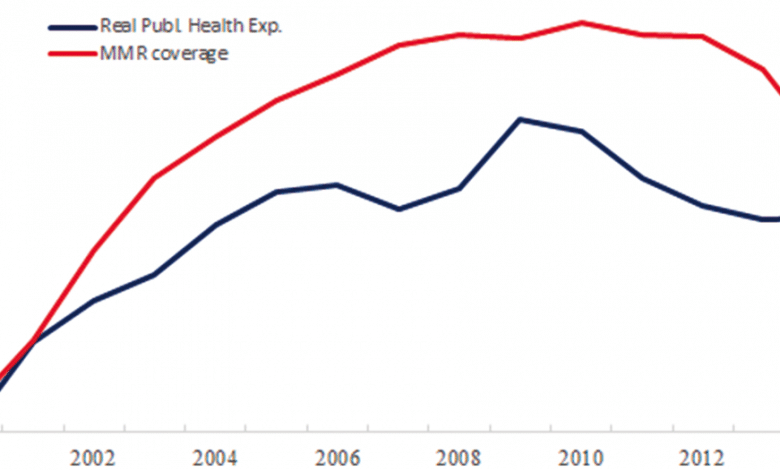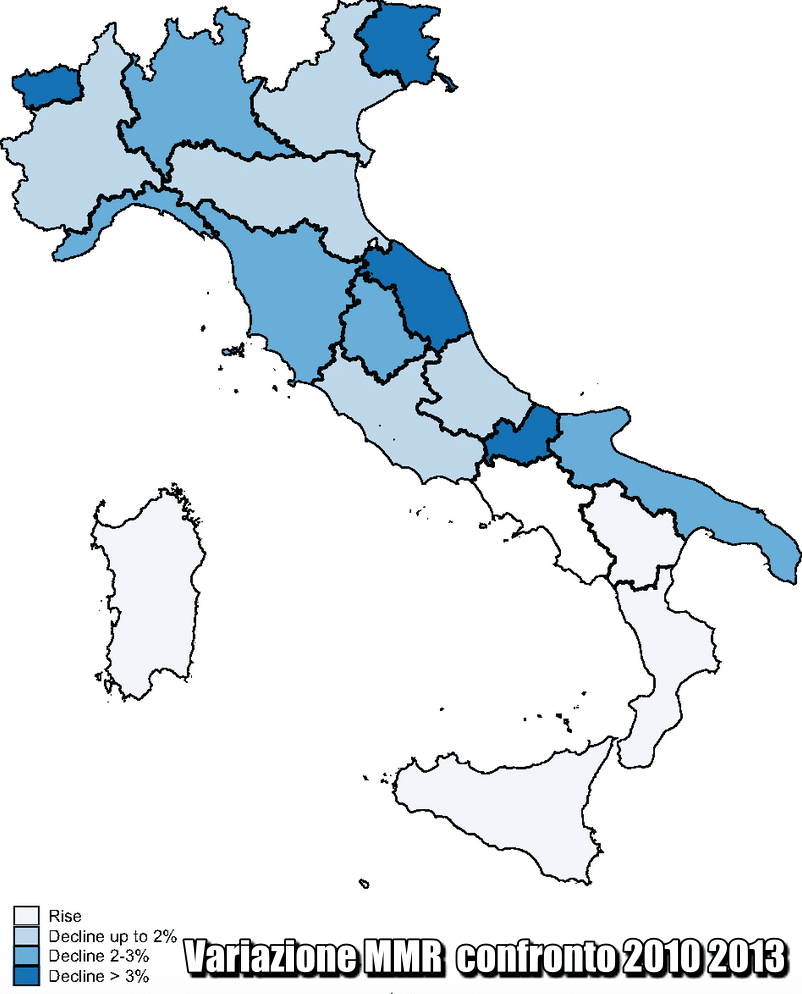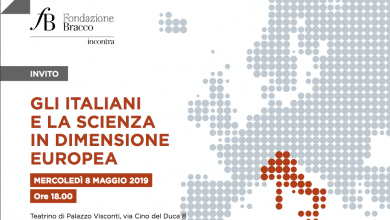
In addition to anti-scientific theories, the decrease in public spending contributes to a reduction in vaccination coverage.
Health care spending cuts also affect measles, mumps, and rubella (MMR) vaccination coverage, which decreases by 0.5% for every 1% spending cut. This is the conclusion reached by an analysis published in the European Journal of Public Health carried out by Bocconi University in collaboration with the London School of Hygiene and Tropical Medicine and the Istituto Superiore di Sanità.
The adoption of austerity policies in the Italian healthcare system was significantly associated with the decline in MMR vaccination rates. However, the recent introduction of mandatory vaccination for Italian children can help counteract this trend.
Vaccines are among the most effective and successful public health interventions, saving two to three million lives each year globally. In 2017, 86% of children worldwide received their primary vaccinations, the highest percentage ever. While vaccination coverage in the European Region is generally high compared to other parts of the world, some new challenges have emerged. Highly mobile populations, difficulties in achieving or maintaining high immunization coverage in routine immunization schedules, under minority ethnic, religious or cultural immune groups, healthcare reorganizations, lack of funding, and an increasingly visible and vocal anti-vaccination movement are  all challenges to achieve gtrggr immunity for vaccine-preventable diseases across Europe, resulting in epidemics, disease and even death.
all challenges to achieve gtrggr immunity for vaccine-preventable diseases across Europe, resulting in epidemics, disease and even death.
Between 2010 and 2014, public health expenditure in Italy decreased by more than 2%, although this varies from region to region. Fixed effects models estimate that each 1% reduction in public health expenditure per capita was associated with a 0.5 percentage point reduction (95% CI: 0.36-0.65 percentage points) in MMR coverage, after adjusting for temporal effects and regional specific trends. The consequences can be illustrated by comparing two regions, Lazio, where public health expenditure decreased by 5% and MMR coverage by more than 3 percentage points, and Sardinia, a historically poor region, where public health expenditure partly increased and MMR rates remained roughly stable.
Italy's most recent budget will increase health spending by 1.3% annually in 2018-20, which will create a fund to invest in infectious disease prevention. However, whether this will be enough to reverse the decline in immunization coverage remains to be seen, as it remains below the projected increase in GDP.
In conclusion, these findings highlight the risks of disinvestment in public health services. Italy is now addressing its low vaccination rate by combining legislation and budget increases. It will be important to monitor these developments, not only to inform policy in Italy but across Europe, where many countries now face similar problems
Related news: Austerity, meals and mandatory vaccination: cross-regional analysis of vaccination in Italy 2000–14
Vaccini, the president of Farmindustria in Lecce: “If we were cynics we would like a no-vax Italy





